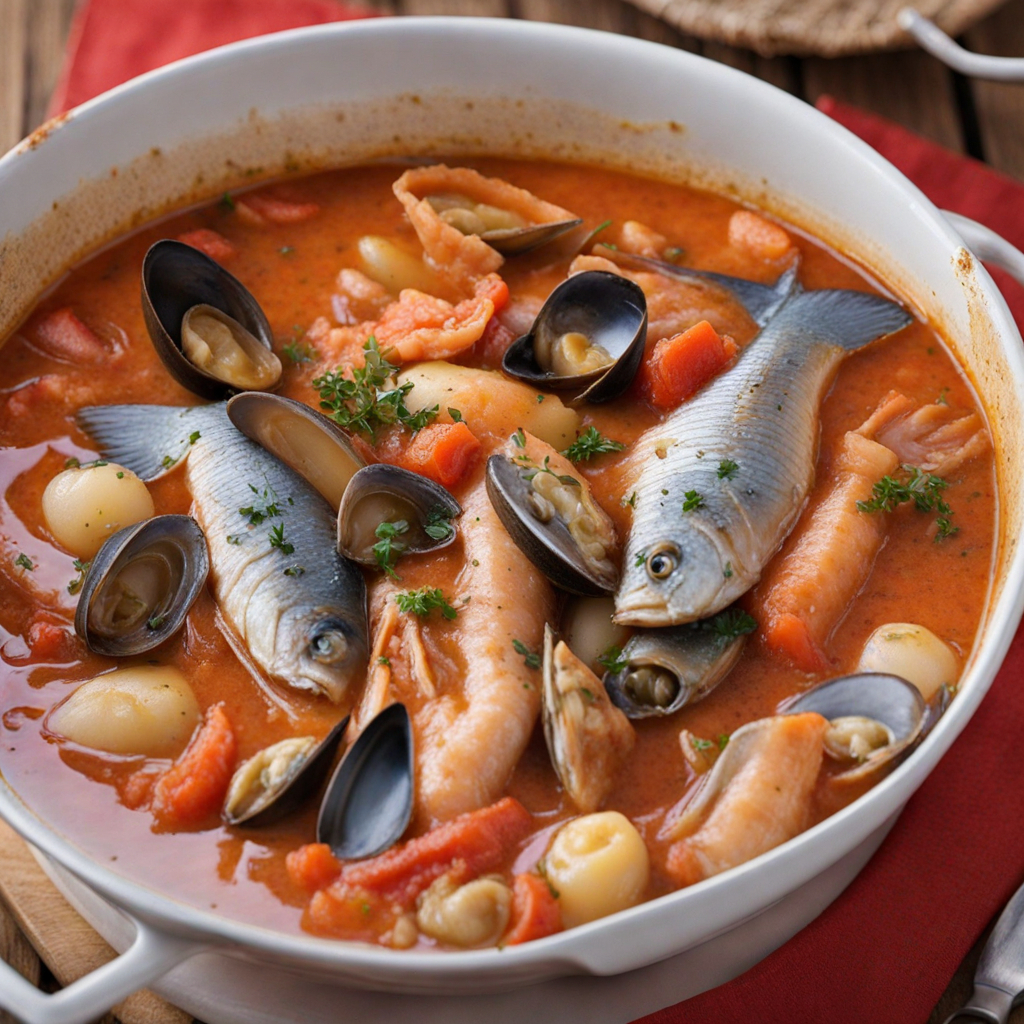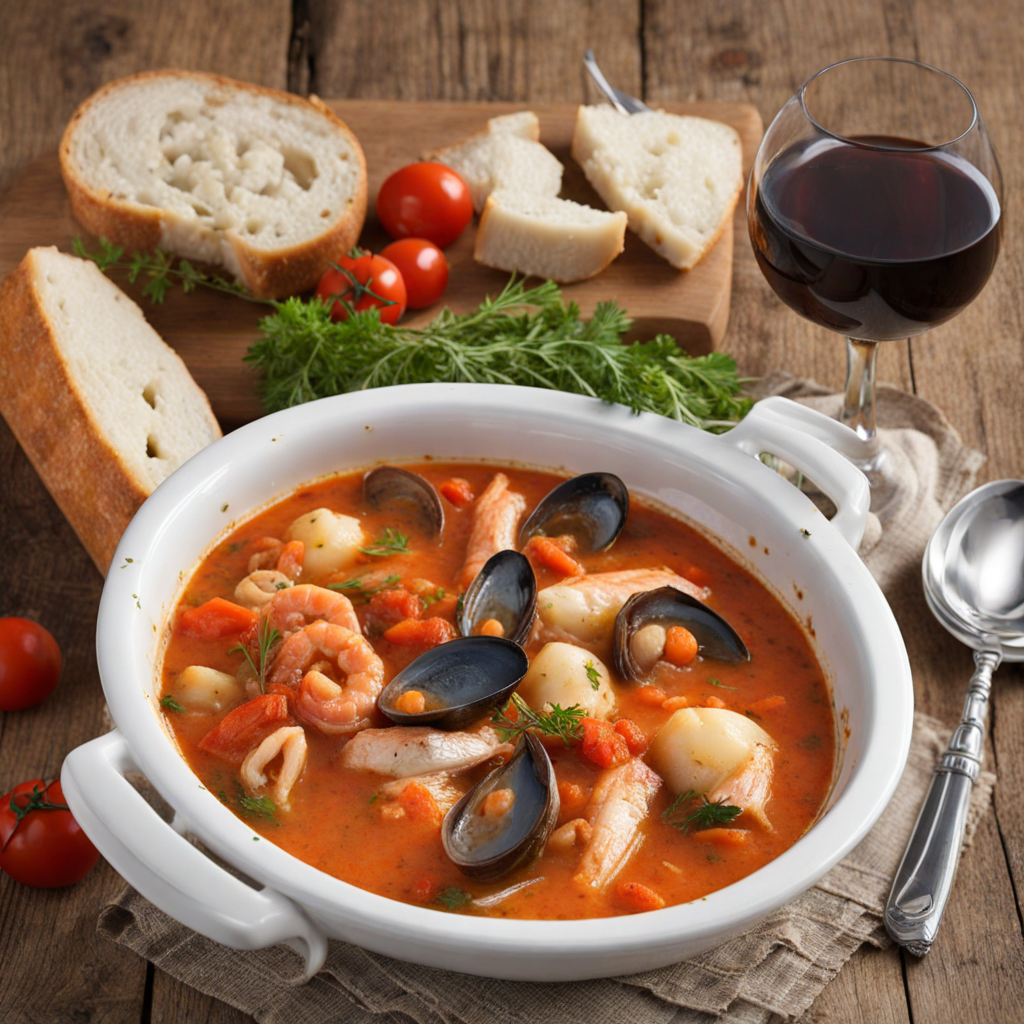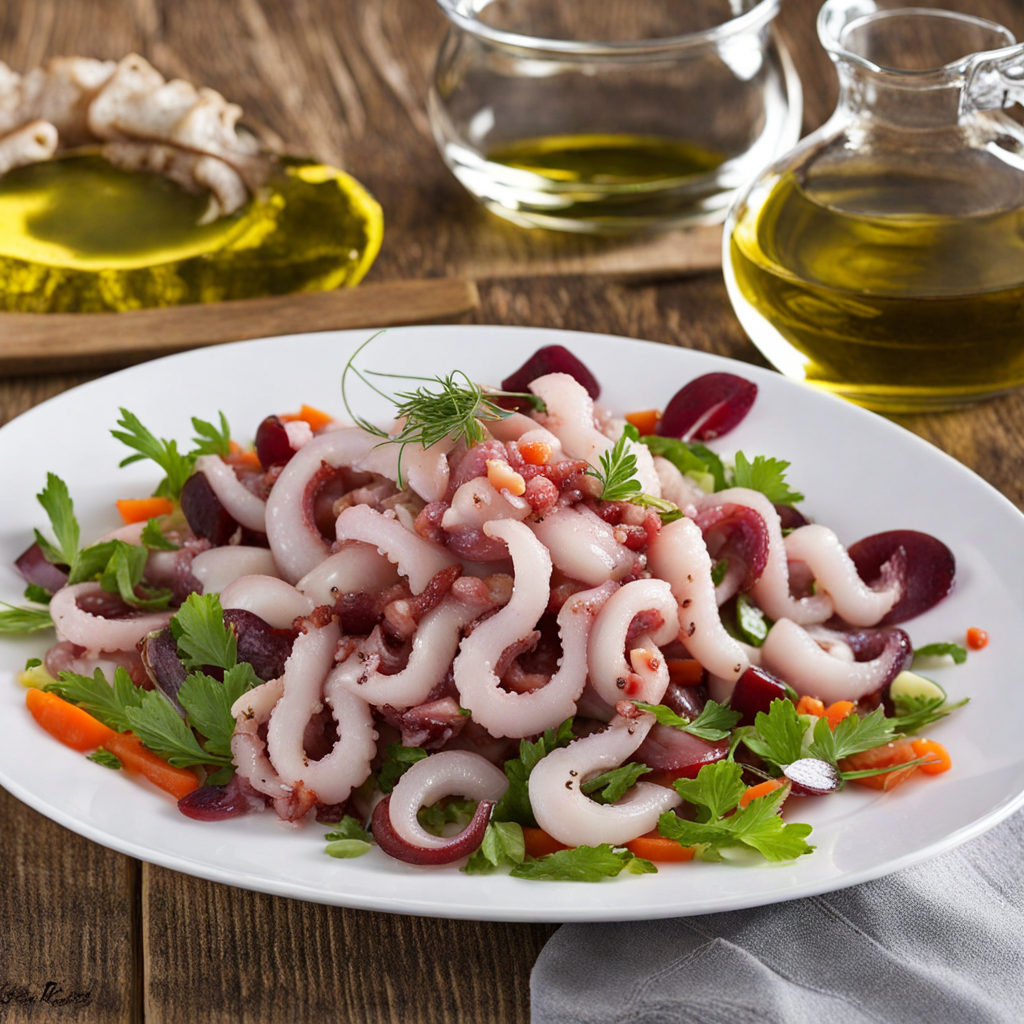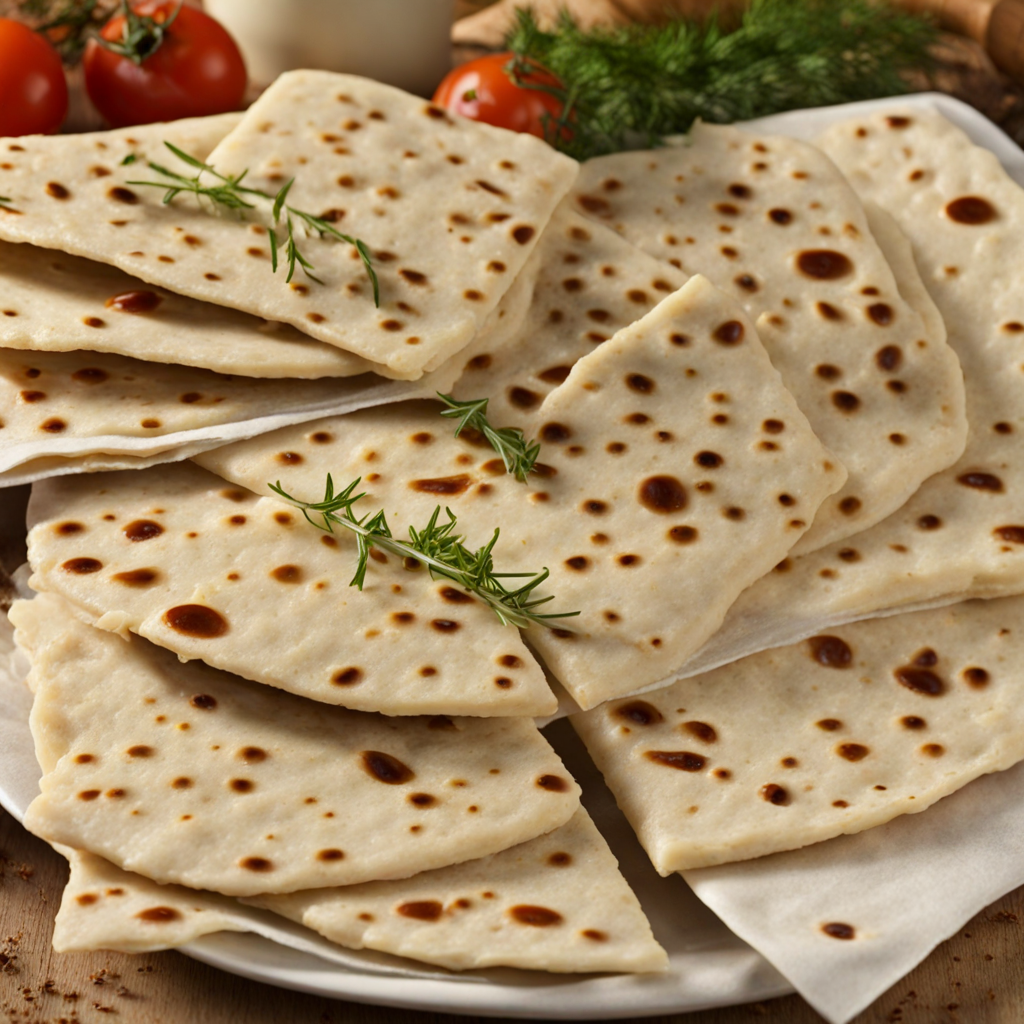Brodetto
Brodetto, a traditional Croatian fish stew, embodies the rich maritime heritage of the Adriatic Sea, where fresh catch meets rustic cooking methods. This delightful dish typically features a variety of fish, such as sea bass, grouper, or monkfish, simmered in a fragrant broth infused with olive oil, tomatoes, garlic, and a medley of aromatic herbs. The combination of flavors creates a savory, slightly tangy base that perfectly complements the tender, flaky fish, making every bite a celebration of the ocean’s bounty. What sets Brodetto apart is its regional variations, with each coastal area in Croatia adding its own unique twist. In some regions, it may be enhanced with the addition of shellfish, while others may incorporate local spices or even a splash of white wine for added depth. The dish is often served with polenta, crusty bread, or even pasta, allowing for a satisfying and hearty meal that warms the soul. Each spoonful is a taste of the sea, evoking memories of sunlit shores and vibrant fishing villages. For those looking to explore new culinary horizons, Brodetto is not just food; it is an experience that connects diners to the Croatian coast's rich cultural tapestry. The rustic charm of this stew makes it a beloved choice among locals and visitors alike, showcasing the simplicity and beauty of traditional Croatian cuisine. Enjoying Brodetto is a delightful journey into the heart of Croatia, where every taste tells a story of the land and its people.
How It Became This Dish
Brudet: A Culinary Journey Through Croatian Waters Brudet, a traditional Croatian fish stew, is more than just a dish; it is a tapestry woven from the threads of history, culture, and the bountiful Adriatic Sea. This culinary delight, known for its robust flavors and rustic charm, has a rich heritage that reflects the life and traditions of the coastal regions of Croatia. To understand Brudet, one must delve into its origins, cultural significance, and the evolution it has undergone through the centuries. #### Origins of Brudet The origins of Brudet can be traced back to the coastal towns of the Adriatic Sea, where fishing has been a pivotal part of the local economy for centuries. Historically, the Mediterranean diet has heavily influenced Croatian cuisine, with an emphasis on fresh fish, vegetables, and herbs. Brudet, in its simplest form, emerged as a practical solution for fishermen and their families. It was a way to utilize the day’s catch, combining various types of fish with locally available ingredients. The earliest records of fish stews in the region date back to the Roman Empire’s presence along the Adriatic coast. The Romans were known for their love of fish and seafood, often preparing them in stews. Over the centuries, as various cultures interacted through trade and conquests, recipes evolved, incorporating elements from different culinary traditions. The Venetians, for instance, introduced spices and techniques that would later influence the preparation of Brudet. #### Ingredients and Preparation At its core, Brudet is a simple dish that highlights the freshness of the ingredients. The basic components typically include a variety of fish, such as mullet, sardines, or scad, alongside shellfish like squid or shrimp. The stew is flavored with a rich base of onions, garlic, tomatoes, and a blend of herbs, often including parsley and bay leaves. Olive oil, a staple in Mediterranean cooking, is used generously to enhance the flavors. The preparation of Brudet is an art form in itself. Traditionally, the fish is first sautéed in olive oil, followed by the addition of chopped onions and garlic. Tomatoes are then stirred in, creating a vibrant base. The mixture is simmered slowly, allowing the flavors to meld, before adding the fish and shellfish. The stew is often served with a side of polenta or crusty bread, which is perfect for soaking up the rich broth. #### Cultural Significance Brudet holds a special place in Croatian culture, particularly among the coastal communities. It is often served during family gatherings, special occasions, and festive celebrations. The dish symbolizes hospitality and togetherness, bringing people together around a shared table. In many coastal towns, Brudet is a staple at fish festivals and local celebrations, where it is prepared in large cauldrons and served to the community. Beyond its role as a communal dish, Brudet also reflects the identity of Croatian coastal cuisine. It embodies the principles of sustainability and respect for nature, as it encourages the use of local, seasonal ingredients. The dish has become a symbol of pride for many Croatian fishermen and chefs, showcasing their connection to the sea and their heritage. #### Evolution Through Time As Croatia has evolved, so too has Brudet. The dish has adapted to changing tastes and culinary trends while remaining true to its roots. In the 20th century, as tourism began to flourish along the Croatian coast, Brudet gained popularity among visitors seeking an authentic taste of the region. Chefs and home cooks started experimenting with variations, introducing different types of fish, herbs, and spices to create unique interpretations of the classic stew. The rise of modern gastronomy has also influenced Brudet’s presentation and preparation. Contemporary chefs have embraced the dish, elevating it to fine dining status while still honoring its traditional essence. Today, Brudet can be found on menus in upscale restaurants, often accompanied by innovative garnishes and artistic plating. However, many families continue to prepare the dish in its traditional form, passing down recipes from generation to generation. In recent years, there has been a renewed interest in traditional Croatian cuisine as part of a broader movement to celebrate regional food heritage. This has led to a resurgence of interest in Brudet, with culinary festivals and events dedicated to the dish. Chefs are now collaborating with local fishermen to source sustainable seafood, ensuring that the future of Brudet remains aligned with the principles of environmental stewardship and culinary authenticity. #### Regional Variations While the essence of Brudet remains consistent, regional variations abound across Croatia. In Istria, for instance, the stew may include a splash of white wine and local herbs, reflecting the region’s agricultural influences. Dalmatian Brudet, on the other hand, might incorporate more tomatoes and olive oil, showcasing the Mediterranean flavors that define this coastal area. Each variation tells a story of local traditions and ingredients, making Brudet a dish that is not only delicious but also deeply tied to the land and its people. #### Conclusion Brudet is a dish that transcends mere sustenance; it is a celebration of Croatia’s rich maritime heritage and culinary traditions. From its humble beginnings as a fisherman's stew to its place on the tables of families and fine-dining establishments alike, Brudet embodies the spirit of community, sustainability, and the love of good food. As it continues to evolve while respecting its roots, Brudet remains a cherished symbol of Croatian identity—a flavorful reminder of the sea and the stories it has to tell. Today, as diners enjoy a bowl of this savory stew, they partake in a culinary tradition that has withstood the test of time, connecting generations through the simple act of sharing a meal.
You may like
Discover local flavors from Croatia







